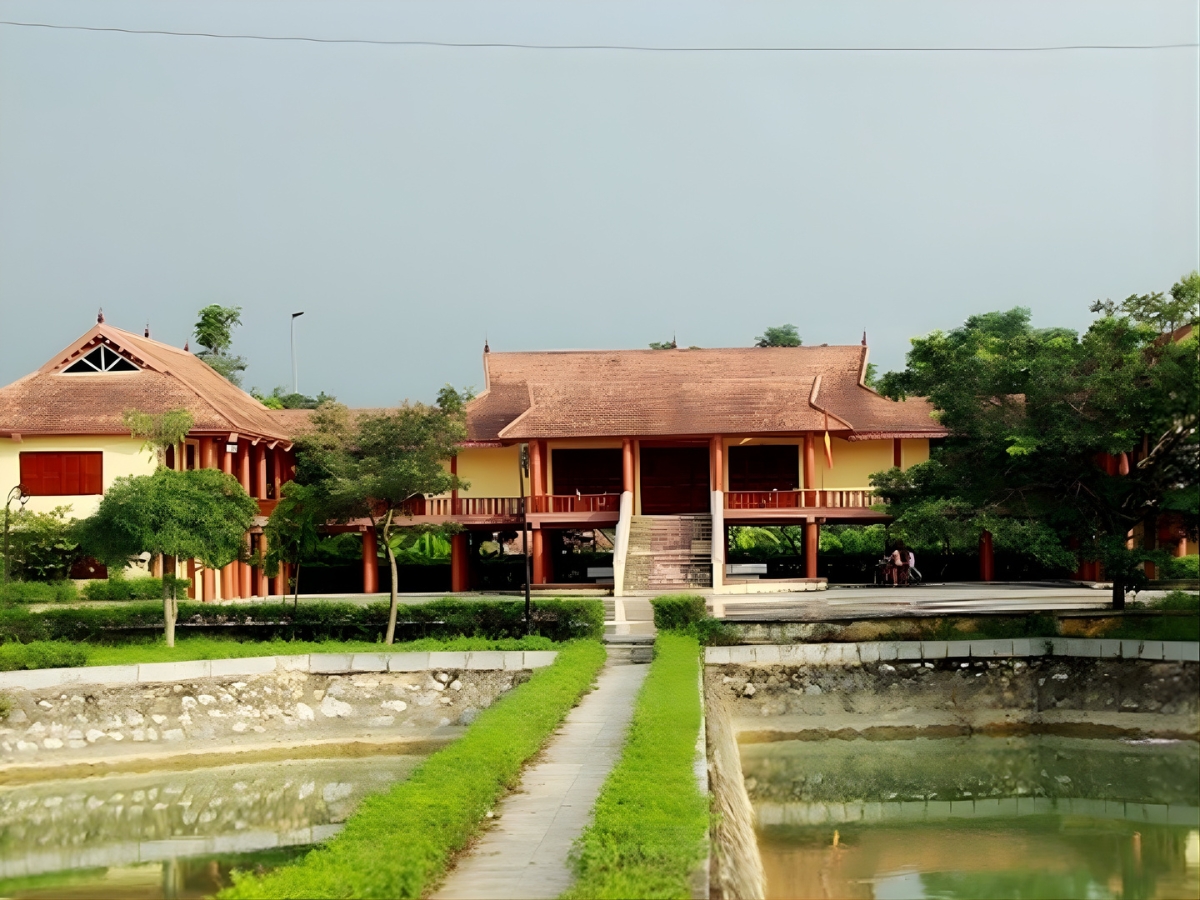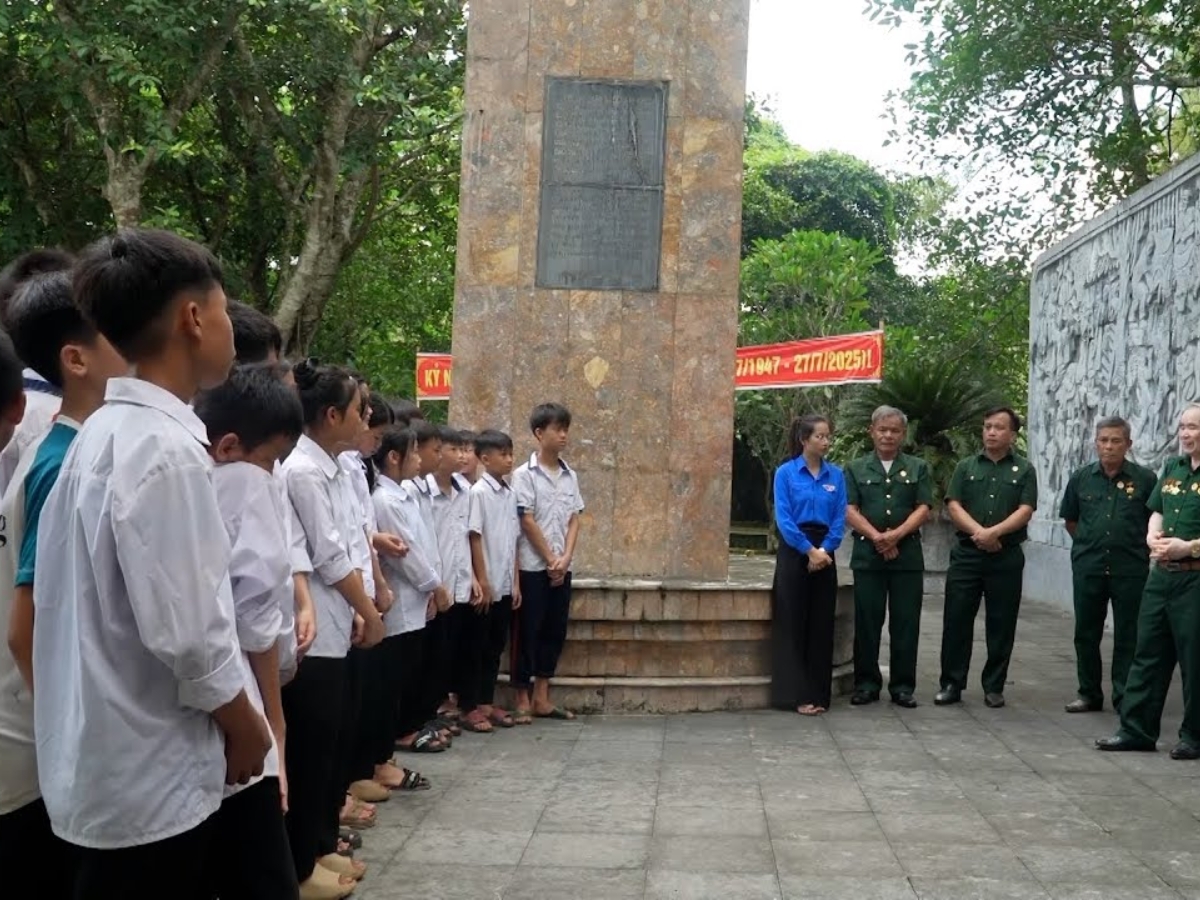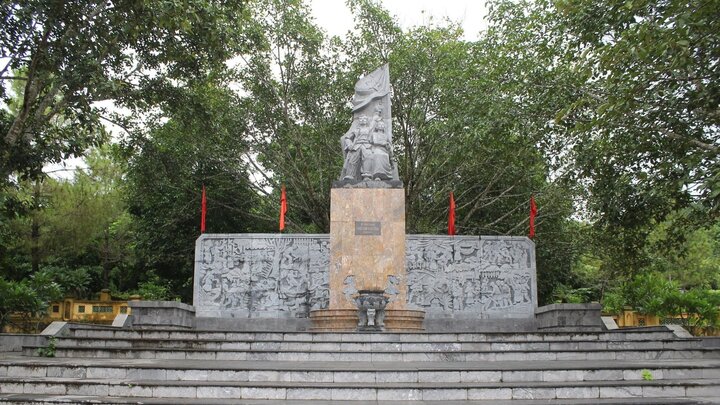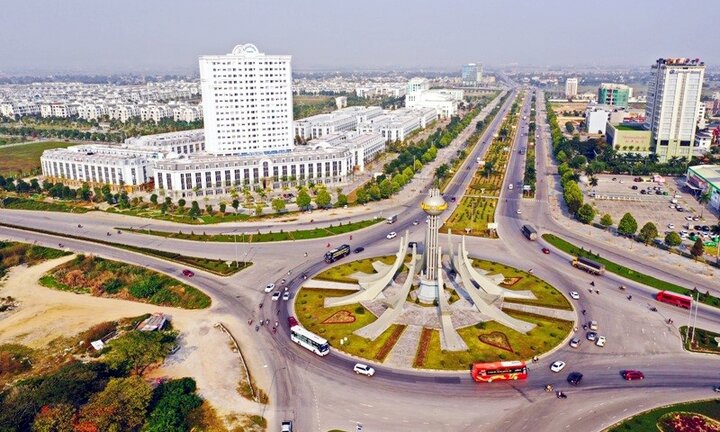1. General Introduction to the Ngoc Trao Resistance Zone
1.1. Geographical Location and Identification of the Ngoc Trao Resistance Zone Relic
The Ngoc Trao resistance zone is located in Ngoc Trao commune, Thanh Hoa province, bordering Hoa Binh province. This area belongs to the mountainous region connected to the forbidden forest of the Nguyen dynasty and the Trieu Tuong mausoleum complex (Ha Long commune, Thanh Hoa province). From Ngoc Trao, one can follow mountain paths to cut across communes of the former Vinh Loc district or head towards Pho Cat to reach Ninh Binh province.
The terrain here is mainly hills and mountains interspersed with dense forests, with many winding valleys and small streams, creating a space that is both majestic and rugged. This characteristic helped the Ngoc Trao resistance zone become a solid natural base in the early period of the resistance war against the French colonialists.
1.2. Why is the Ngoc Trao Resistance Zone a popular tourist destination?
The Ngoc Trao resistance zone is not only a historical relic marking the resilient spirit of the army and people of Thanh Hoa in the struggle against the French colonialists, but also a destination rich in educational, cultural, and ecotourism values. Coming here, visitors can relive the heroic atmosphere of the resistance years, when the first guerrilla forces of Thanh Hoa were formed and fought bravely amidst the rugged mountains and forests.

Ngoc Trao revolutionary base marks many historical values and a resilient revolutionary spirit. (Source: Thanh Hoa Television)
Besides its historical value, Ngoc Trao revolutionary base is also attractive for its wild and majestic natural landscape. Green forests, clear streams, and rolling hills surrounding the relic site create a tranquil space, suitable for those who love exploration and experience. Memorial structures are harmoniously planned with nature, such as the uprising statue, the stele honoring heroes and martyrs, the traditional house… evoking a solemn yet familiar feeling.
With the combination of historical value, ecological landscape, and revolutionary spirit, Ngoc Trao revolutionary base is increasingly chosen by many tourists, students, and history enthusiasts as a “red address” to honor and learn about the struggle traditions of our ancestors.
2. History of Formation and Development of Ngoc Trao Revolutionary Base
2.1. Wartime Context and the Birth of the Revolutionary Base (1941)
After the 8th Central Committee Conference in 1941, the Vietnamese revolutionary movement entered a new phase with the policy of preparing for armed insurrection. Thanh Hoa, with its strategic location between the North and Central regions, was identified by the Party Central Committee as an important area for building a revolutionary base. Amidst the tightening control by the French colonialists and Japanese fascists, Ngoc Trao was chosen for its rugged mountainous terrain, favorable for organizing forces, hiding weapons, and sheltering cadres. In 1941, this place officially became the first revolutionary base of Thanh Hoa, a steadfast “fortress” in the early days of the struggle for independence.
2.2. Establishment of the Ngoc Trao Guerrilla Team and Notable Activities
On September 19, 1941, at Treo cave, the establishment ceremony of the Ngoc Trao guerrilla team was solemnly held amidst the mountains and forests. Under the red flag with a yellow star, 24 team members swore to fight, vowing to sacrifice for national independence and the happiness of the people. This was the first revolutionary armed unit of Thanh Hoa province, responsible for propaganda and mobilizing the masses, as well as directly fighting against the puppet regime. Despite fierce encirclement and suppression by the enemy, the guerrilla force tenaciously held on, building the movement, and serving as the core for later revolutionary upsurges. Their indomitable fighting spirit spread powerfully, encouraging the people of the entire province to rise up and regain freedom and self-determination.

The wall depicts images of the Ngoc Trao guerrilla unit. (Source: Thanh Hoa Television)
2.3. Terrain is the decisive factor in making the Ngoc Trao resistance zone strong
Terrain plays an important role in the formation and existence of the Ngoc Trao resistance zone . This area is surrounded by overlapping mountains, dense forests, many small trails, easy to hide in, and difficult to access. The valleys, like natural basins, are convenient for living and easy to organize defense when attacked. Especially, the local people wholeheartedly protected, provided food, medicine, and information, creating a strong rear for the revolution. Thanks to the combination of “favorable weather, advantageous terrain, and popular support”, the Ngoc Trao resistance zone has become a symbol of the indomitable will and solidarity of the army and people of Thanh Hoa in the early days of the struggle for independence.
3. Experiencing a visit to the Ngoc Trao resistance zone
3.1. Historical artifacts and spaces
The Ngoc Trao resistance zone relic area is currently planned to include three main points: the central resistance zone area, Hang Treo, and Ma Mau hill. At the central resistance zone area, visitors can visit the memorial stele house, the monument to the guerrilla fighters, the traditional museum, and the martyrs' cemetery. This place was once the headquarters of the resistance zone command, the printing office for the “Tu Do” newspaper during the resistance period. Some historical sites such as the guard banyan tree, the temple dedicated to Tong Duy Tan, or the guerrilla well are still preserved and introduced to visitors.

Exhibition house at the Ngoc Trạo Resistance Zone Historical Site. (Source: Collected)
Treo Cave – where the Ngoc Trạo Guerrilla Team was founded – is preserved intact and has become a site for incense offering and traditional education for the younger generation. Meanwhile, Ma Mau Hill is the area where the guerrilla forces were stationed, trained, and fought. A well and steles introducing the activities of the army in the past still remain here. The entire relic area is a "living museum" amidst the mountains and forests of Thach Thanh, vividly recreating the heroic history of the Thanh Hoa revolutionary movement.
3.2. Must-visit check-in spots and activities when visiting the Ngoc Trạo Resistance Zone
One of the most outstanding stops is Treo Cave. This is a sacred space, surrounded by majestic mountains and forests, an unmissable destination on your exploration journey. Additionally, visitors can explore areas that once served as communication stations, secret meeting places, or relics and memorial steles for the heroes who fell.
Each year, during the incense offering festival commemorating the founding of the Ngoc Trạo Guerrilla Resistance Zone, the atmosphere here becomes more vibrant than ever with traditional activities, artistic performances, and solemn tribute ceremonies.
3.3. Suggestions for visiting nearby attractions to the Ngoc Trạo Resistance Zone
From the Ngoc Trạo Resistance Zone, visitors can combine a pilgrimage journey with many other prominent tourist destinations in the Thanh Hoa region. Not far away is the Lam Kinh Historical Site – associated with the Lam Son uprising and the Le Dynasty, the sacred Song Son Temple, famous for its Mother Goddess worship; or the legend of Tien Cave, a spiritual tourist destination being developed with majestic scenery, linked to legends and the spiritual life of the Vietnamese people.
Additionally, visitors can combine visits to the Cam Luong sacred fish stream, May Thach Lam waterfall, or Ben En National Park to enjoy the fresh nature and explore the characteristic river and mountain landscape of western Thanh Hoa. The combination of historical, cultural, and ecological values makes the journey to the Ngoc Trạo Resistance Zone rich, both emotionally profound and full of exploratory energy.
4. Useful tips and experiences when visiting the Ngoc Trạo Resistance Zone
When visiting the Ngoc Trạo Resistance Zone, visitors should prepare thoroughly for a smooth and safe trip. As the terrain is mainly hilly and forested, you should choose light, breathable, and sweat-absorbent clothing. Sports shoes or hiking boots with good grip will help you move more easily on slopes or dirt paths. Don't forget to bring a wide-brimmed hat, a light jacket, personal water, and mosquito repellent to protect your health. If you love photography, prepare your camera or phone with a full battery and a power bank to capture memorable moments amidst the majestic mountain and forest scenery. A little thoughtful preparation will make your journey to explore this historical resistance zone more complete and meaningful.

Dress respectfully and maintain a solemn attitude when visiting the Ngoc Trạo Resistance Zone. (Source: Thanh Hoa Television)
The best time to visit the Ngoc Trạo Resistance Zone is in autumn or early spring, when the weather is cool, the forests are lush green, and the scenery is full of life. Especially, on September 19th annually, this place hosts the anniversary ceremony of the founding of the Ngoc Trạo Guerrilla Team, attracting many tourists, veterans, and students to offer incense, participate in cultural and artistic activities, and recreate the heroic spirit of the past revolutionary movement. If you have the chance to visit at this time, you will not only learn about history but also immerse yourself in the sacred and proud atmosphere of the heroic land of Thanh Hoa.
The Ngoc Trạo Resistance Zone Thanh Hoa is a symbol of the indomitable spirit and unyielding patriotism of the army and people of Thanh Hoa. Although time has passed, this place still echoes with the heroic spirit of a glorious era, becoming a sacred destination to honor and be proud of the revolutionary tradition. Come to the Ngoc Trạo Resistance Zone once to fully experience the vitality of history amidst the mountains and forests of Thanh Hoa.







